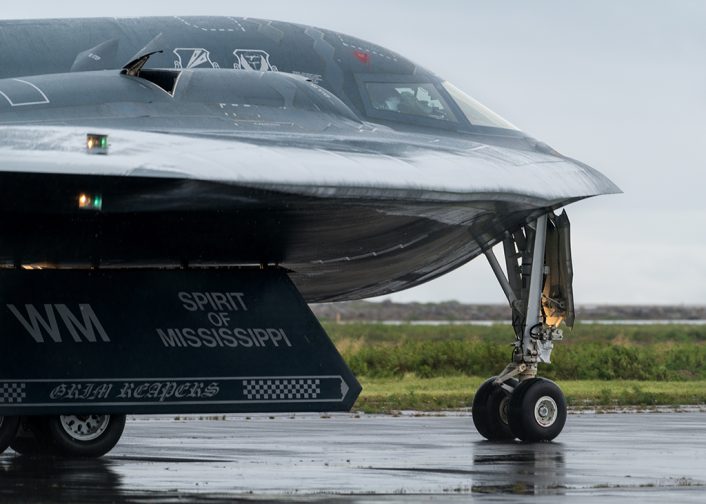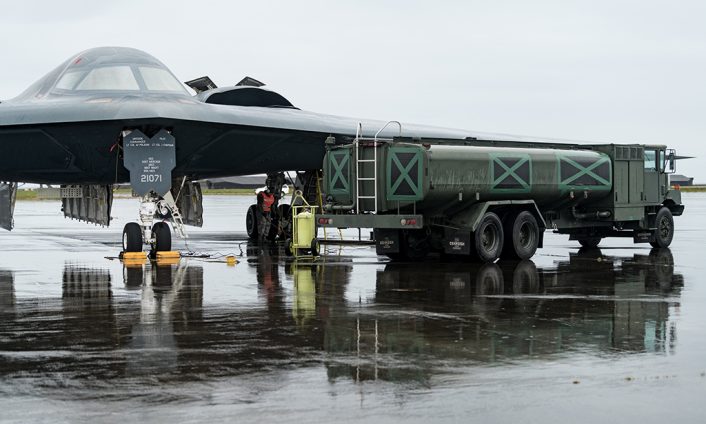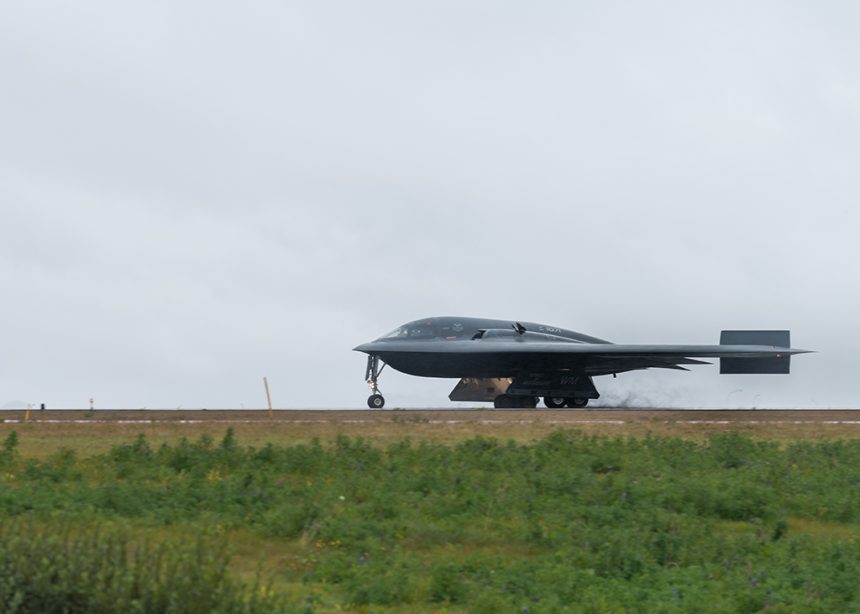A B-2 bomber deployed to RAF Fairford landed in Keflavik yesterday.
On Aug. 28, 2019, one of the three B-2A stealth bombers deployed to RAF Fairford from Whiteman Air Force Base, Missouri, as part of a Bomber Task Force, landed at Naval Air Station Keflavik, Iceland, marking the first landing of B-2 in Iceland.
Flying as MYTEE 22, the “Spirit of Mississippi” (82-1071) conducted hot-pit refueling, which is a method of refueling an aircraft without shutting down the engines.
“The purpose of the flights was to conduct theater familiarization for aircrew members and to demonstrate U.S. commitment to allies and partners through the global employment of our military forces. U.S. Strategic Command regularly tests and evaluates the readiness of strategic assets to ensure we are able to honor our security commitments.”
“The use of strategic bombers in Iceland helps exercise Naval Air Station Keflavik as a forward location for the B-2, ensuring that it is engaged, postured and ready with credible force to assure, deter and defend the U.S. and its allies in an increasingly complex security environment,” says the U.S. Air Force.
The use of Keflavik as a forward operating base for the B-2 is particularly interesting, as it expands the capabilities of the stealth bomber well into the strategic Arctic region:
As already explained commenting previous deployments to RAF Fairford (as those in 2017 or 2015), B-2s don’t operate away from Whiteman AFB, in Missouri, too often: in fact, they are able to hit their targets with very long round-trip missions from their homebase in CONUS (Continental U.S.) as demonstrated by their periodic trans-Atlantic training missions, extended nuclear deterrence sorties in the Korean Peninsula, as well as during real conflicts, such as the Libya Air War in 2011, Allied Force in Serbia in 1999 or the more recent air strike on ISIS in Libya.

Hot-pit refueling operations are quite routine for the stealth bat-wing bombers: during long-range missions launched from Whiteman Air Force Base, Missouri, home of the 509th Bomb Wing, hot-pit refueling ops are also used to perform engine-running crew change activity. In the past, stealth bombers travelling to the UK (for operational purposes or to attend the airshows) have often conducted hot-pit activities on the ground, as happened during a mission to RAF Fairford in June 2015 or in July 2012 during RIAT (Royal International Air Tattoo) airshow.

The aircraft spent a couple of hours on the ground in Iceland, before flying back to the UK.








